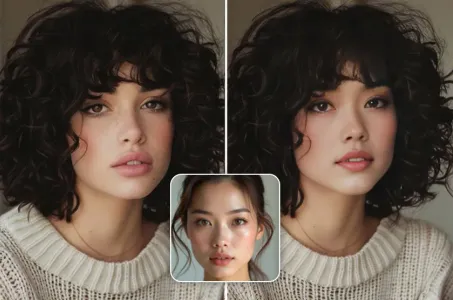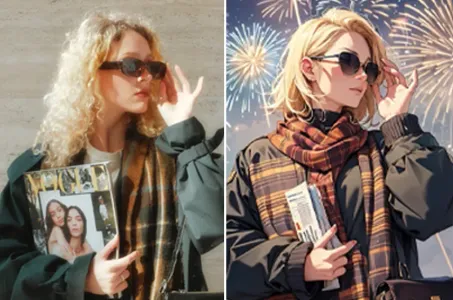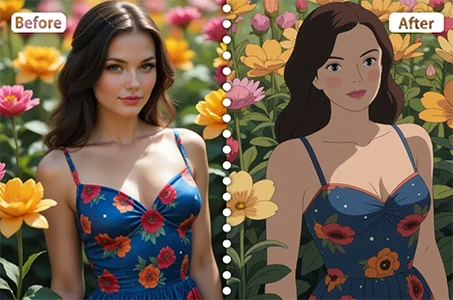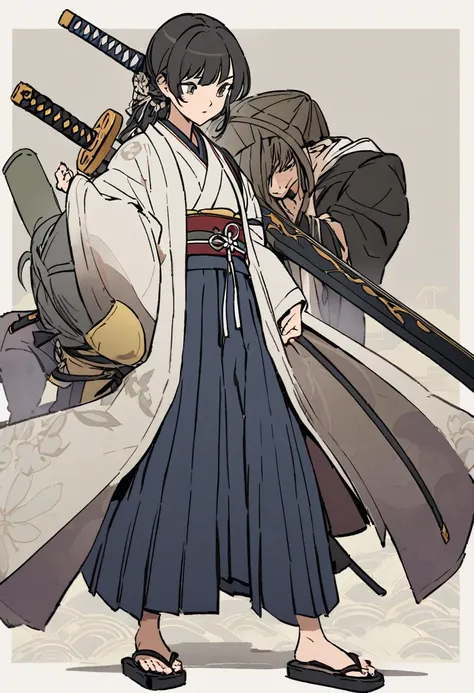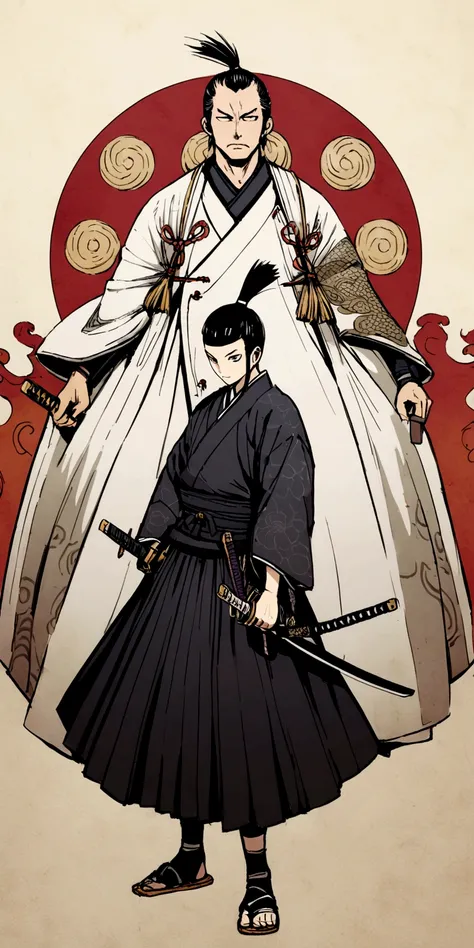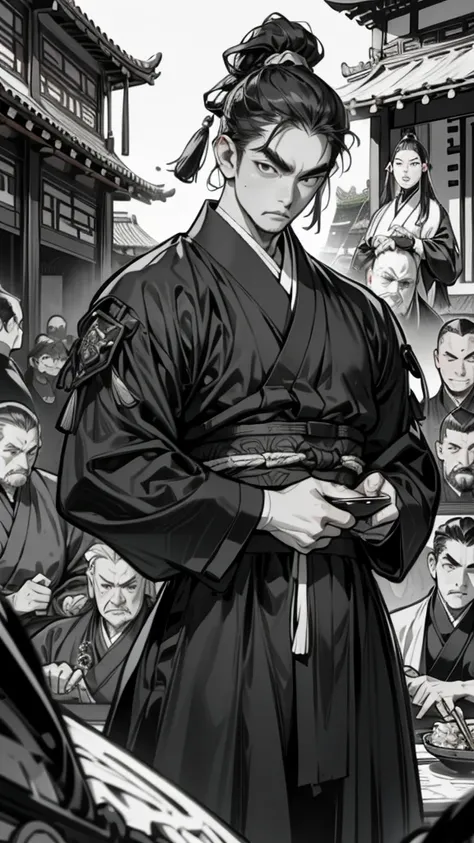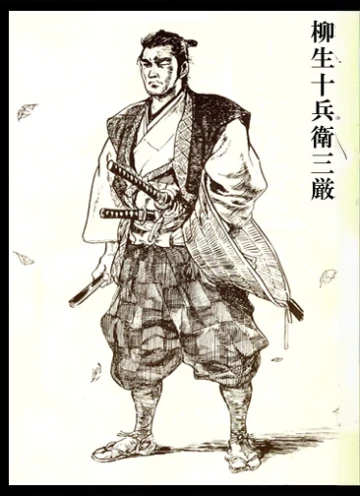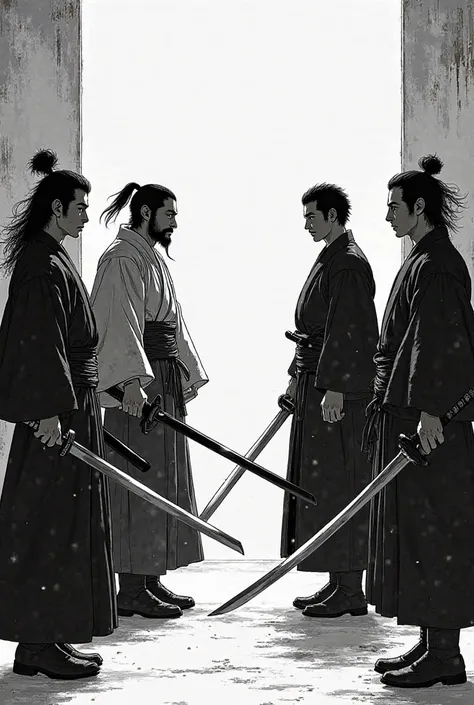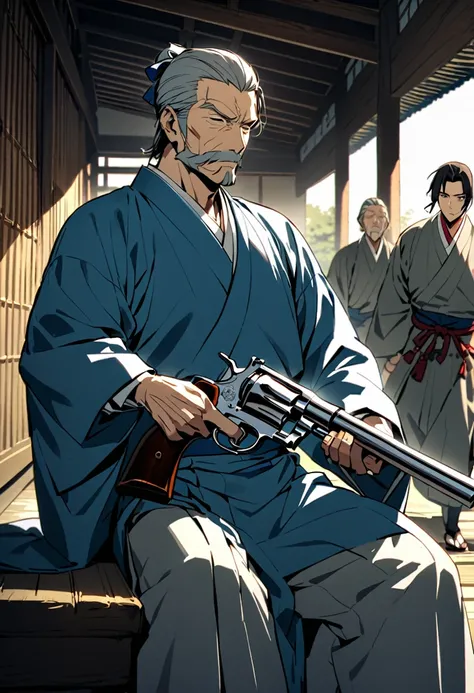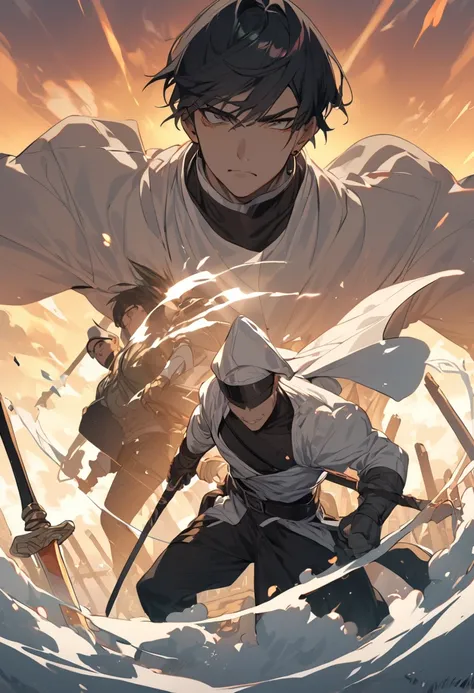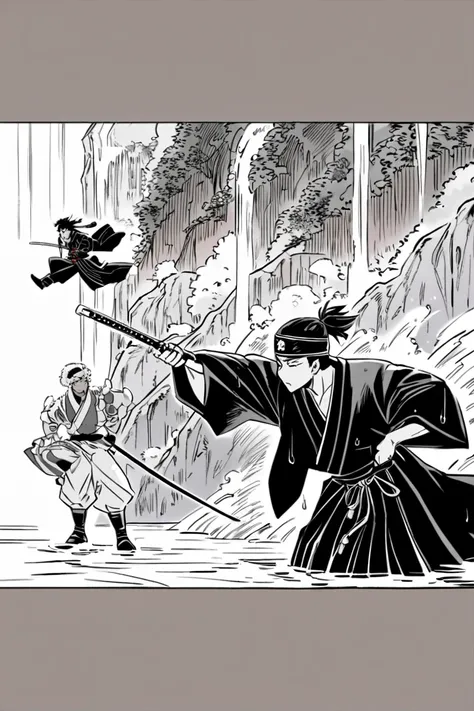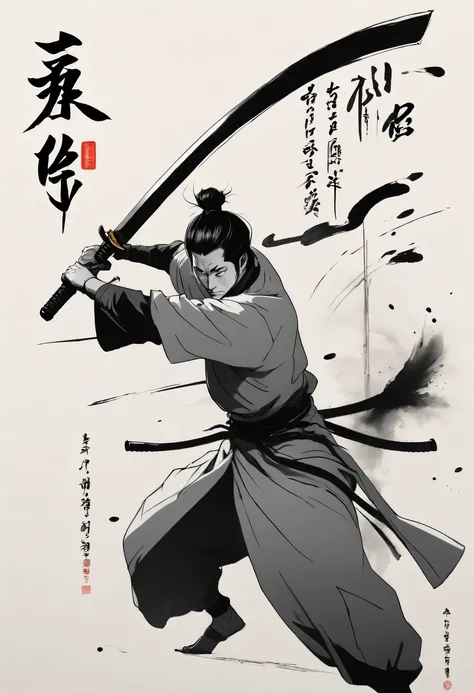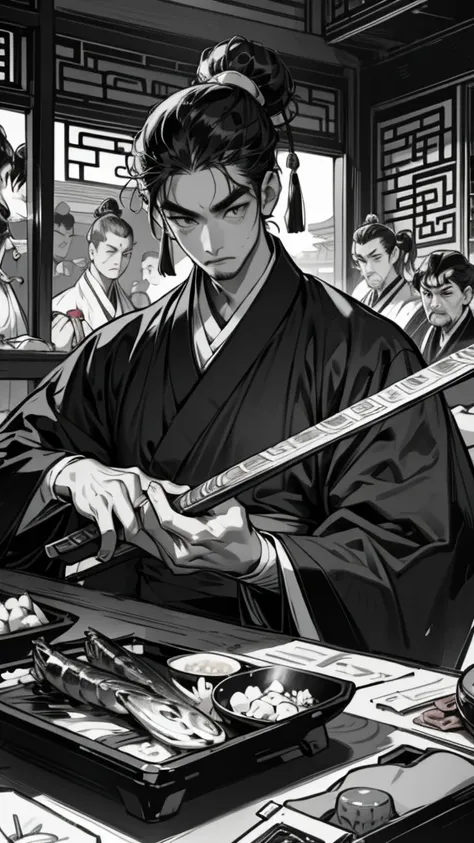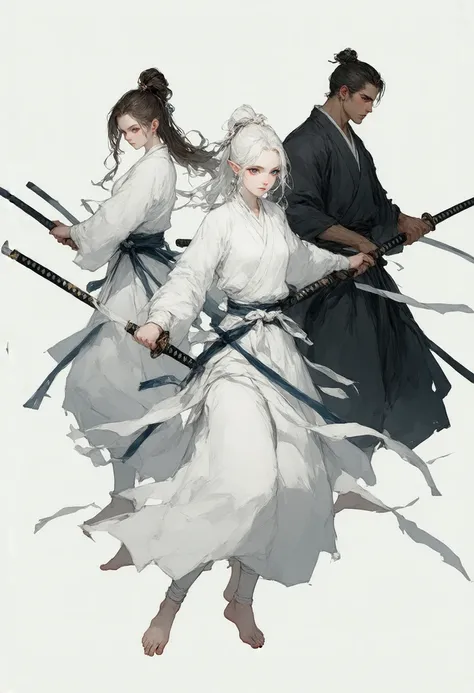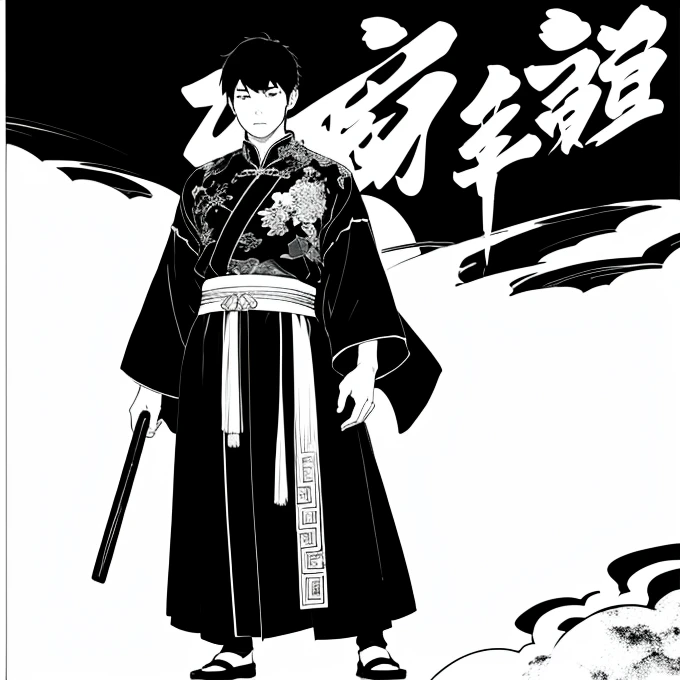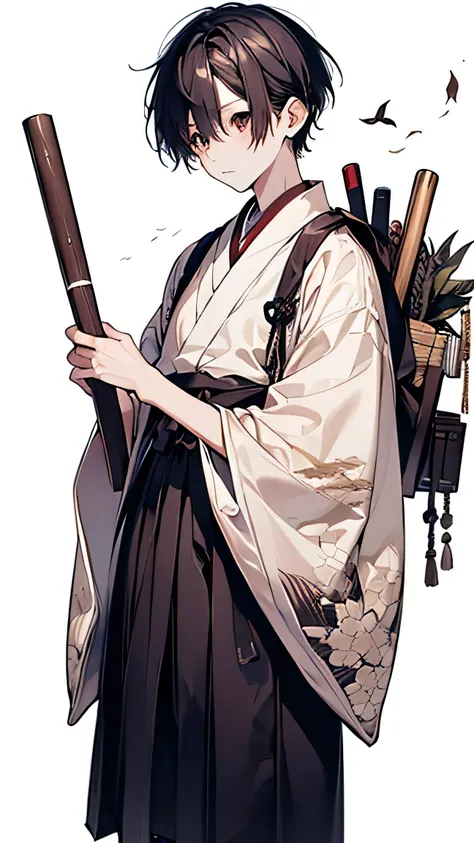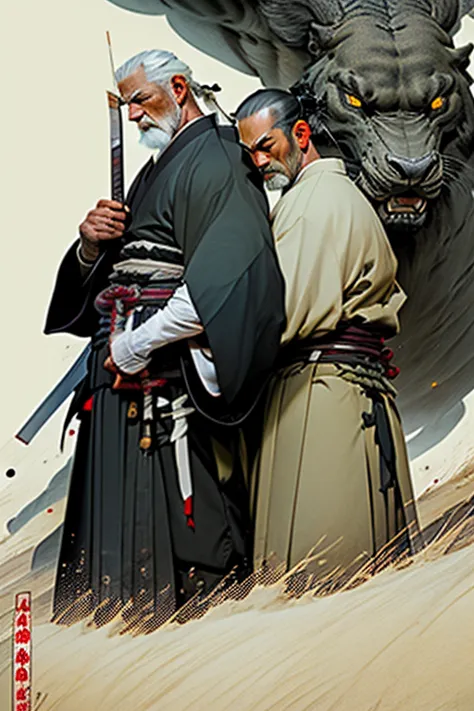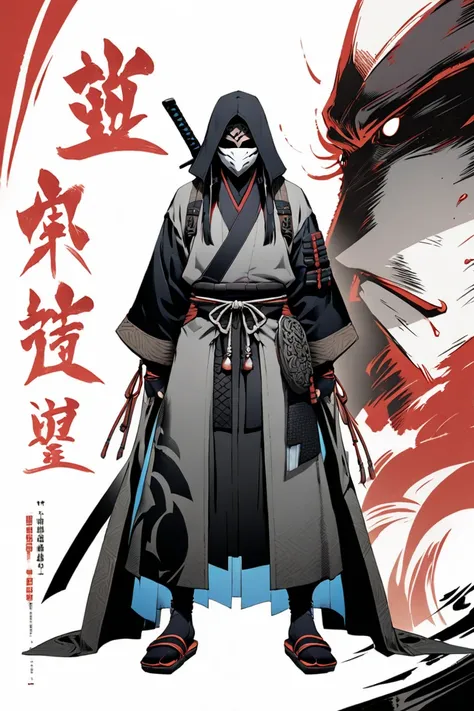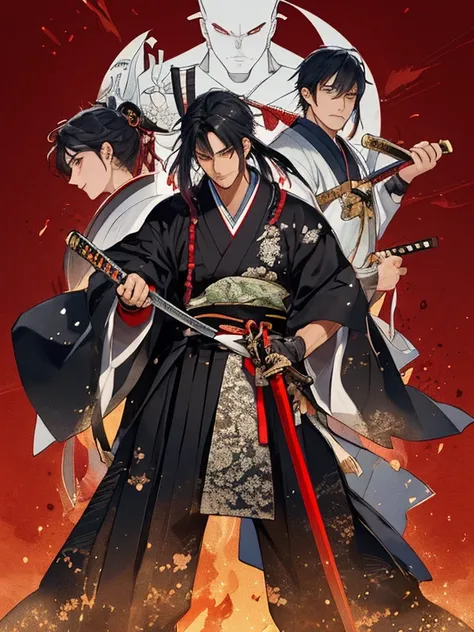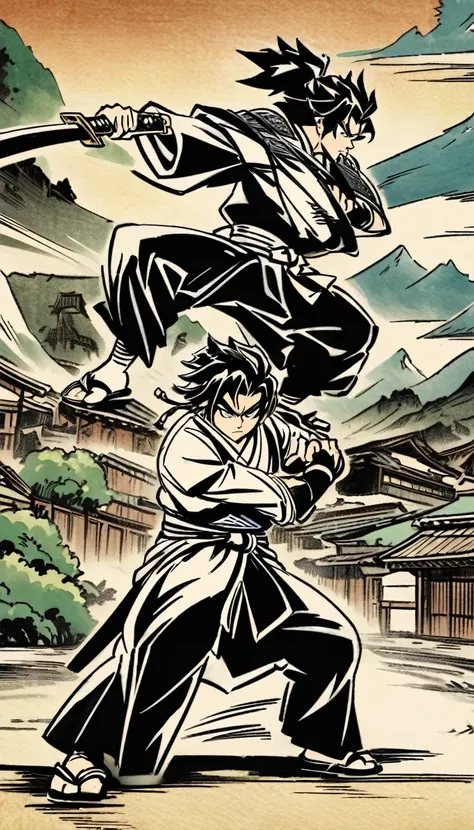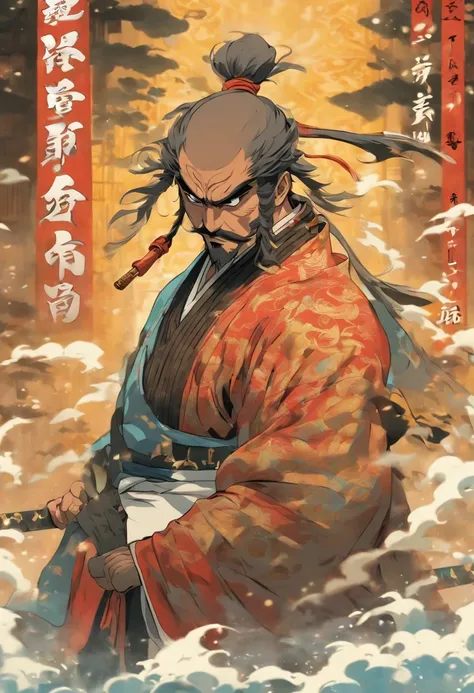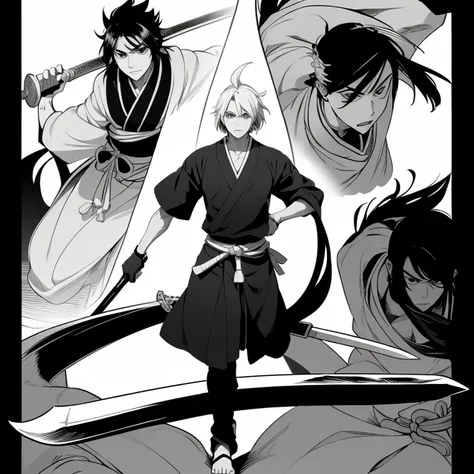Kimono Top: Musashi wears a traditional Japanese kimono, usually in dark tones l
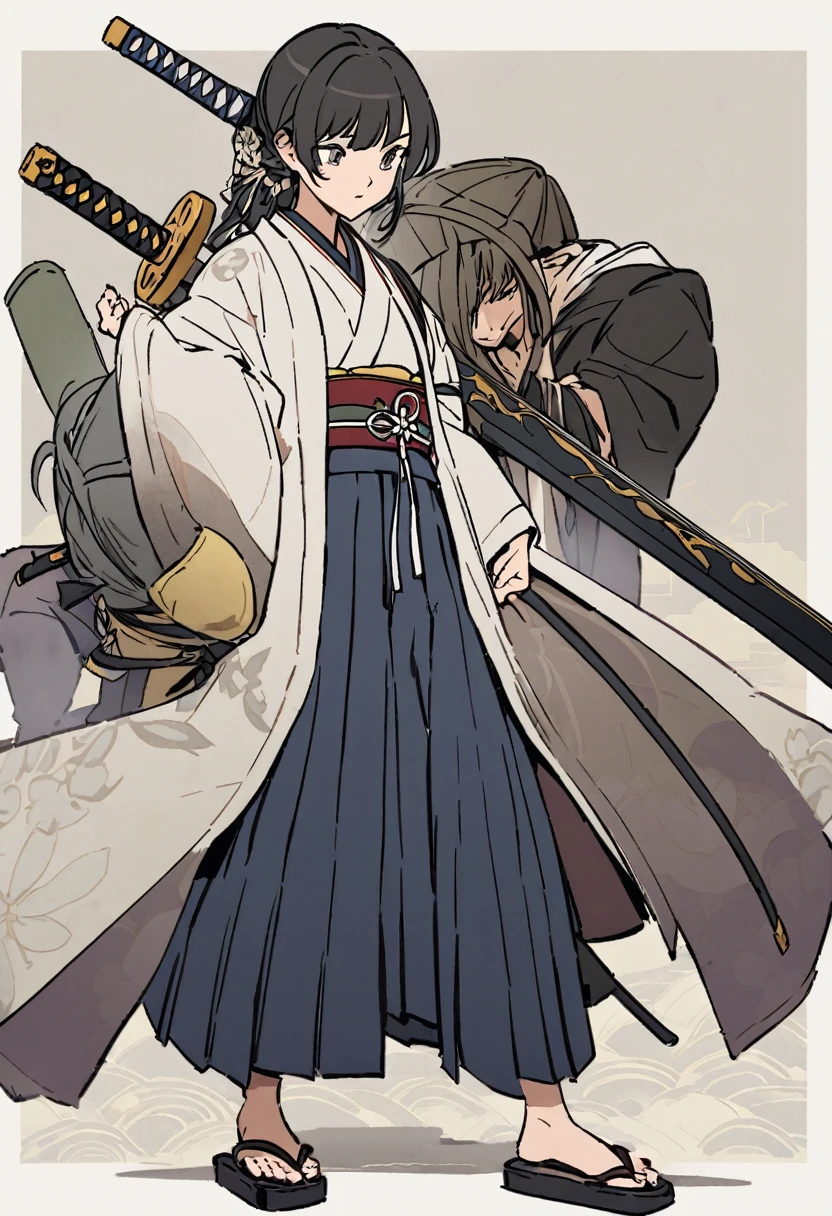
Kimono Top: Musashi wears a traditional Japanese kimono, usually in dark tones like black, navy blue or brown, reflecting his life of wandering and constant combat. The fabric is often designed with frayed details and patches, showing signs of prolonged use and battles. The kimono is usually tied simply, no adornments or extravagant accessories. Haori: In some illustrations, he can be seen wearing a haori (a type of light jacket) about the kimono. The haori is equally simple and utilitarian, without excessive adornments, and generally in dark or neutral tones. Sometimes, there may be signs of wear or patches. Hakama Bottom: Musashi often wears a hakama, a type of traditional Japanese baggy pants, which allows ease of movement in combat. The hakama is normally dark, matching the tone of the kimono, and may have pleats that give a solemn and dignified look. The pleats are well defined, but the garment still shows signs of constant use. obi: O obi (range) that ties the kimono and hakama is robust and functional, Conveniently strapped to withstand constant movement and battle. Geralmente, the obi is also a dark tone, complementing the rest of the outfit. Waraji Shoes: Musashi usa waraji, traditional straw sandals that are practical for long walks and battles. The sandals are worn out, reflecting your wandering life. Straw straps are tied tightly around the ankles. Katana and Wakizashi accessories: Musashi carries two swords with him: a katana (Longsword) e uma wakizashi (short sword), samurai warrior symbol. Swords are kept in their scabbards, trapped in the obi in a practical way, allowing easy access during combat. Hems and Tsuba: Sword sheaths are simple, no extravagant ornamentation, made for functionality. The guards (smoke) of swords can have subtle details, but are designed primarily for
Generation Data
Records
Prompts
Copy
Kimono Top: Musashi wears a traditional Japanese kimono
,
usually in dark tones like black
,
navy blue or brown
,
reflecting his life of wandering and constant combat
.
The fabric is often designed with frayed details and patches
,
showing signs of prolonged use and battles
.
The kimono is usually tied simply
,
no adornments or extravagant accessories
.
Haori: In some illustrations
,
he can be seen wearing a haori (a type of light jacket) about the kimono
.
The haori is equally simple and utilitarian
,
without excessive adornments
,
and generally in dark or neutral tones
.
Sometimes
,
there may be signs of wear or patches
.
Hakama Bottom: Musashi often wears a hakama
,
a type of traditional Japanese baggy pants
,
which allows ease of movement in combat
.
The hakama is normally dark
,
matching the tone of the kimono
,
and may have pleats that give a solemn and dignified look
.
The pleats are well defined
,
but the garment still shows signs of constant use
.
obi: O obi (range) that ties the kimono and hakama is robust and functional
,
Conveniently strapped to withstand constant movement and battle
.
Geralmente
,
the obi is also a dark tone
,
complementing the rest of the outfit
.
Waraji Shoes: Musashi usa waraji
,
traditional straw sandals that are practical for long walks and battles
.
The sandals are worn out
,
reflecting your wandering life
.
Straw straps are tied tightly around the ankles
.
Katana and Wakizashi accessories: Musashi carries two swords with him: a katana (Longsword) e uma wakizashi (short sword)
,
samurai warrior symbol
.
Swords are kept in their scabbards
,
trapped in the obi in a practical way
,
allowing easy access during combat
.
Hems and Tsuba: Sword sheaths are simple
,
no extravagant ornamentation
,
made for functionality
.
The guards (smoke) of swords can have subtle details
,
but are designed primarily for
INFO
Checkpoint & LoRA
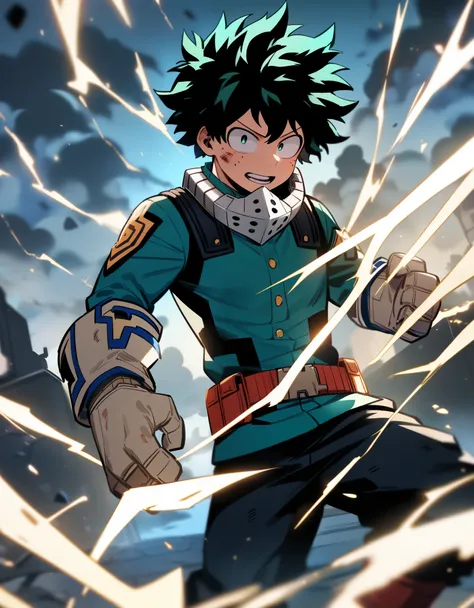
Checkpoint
Animagine XL V3.1
#Anime
#Kimono
0 comment
0
2
0





